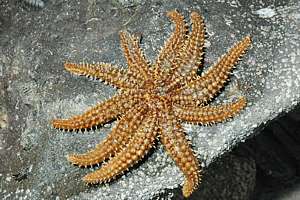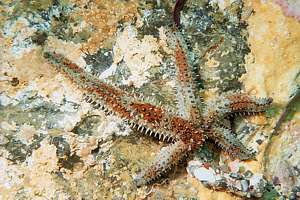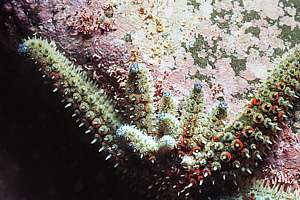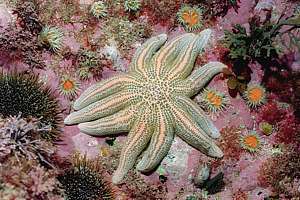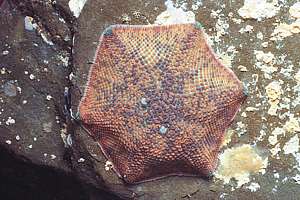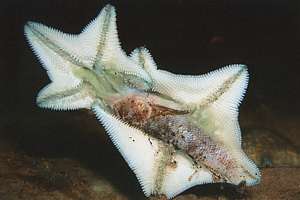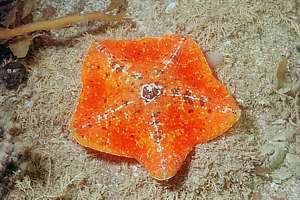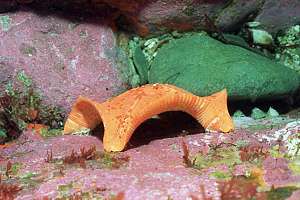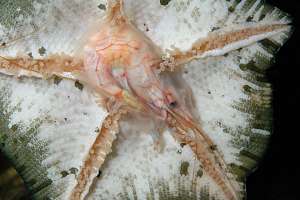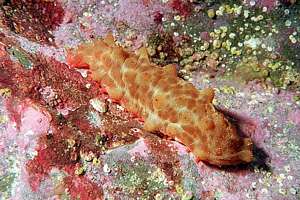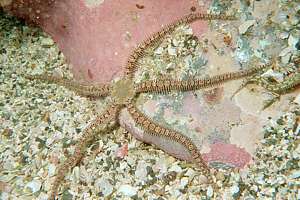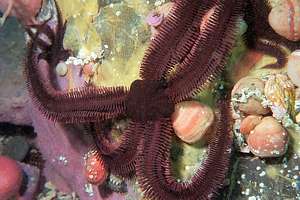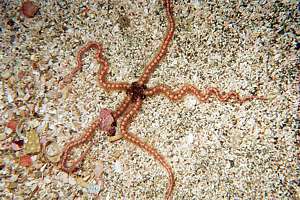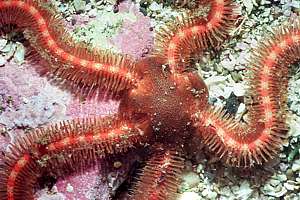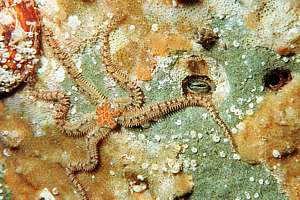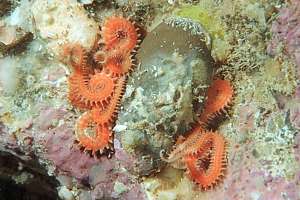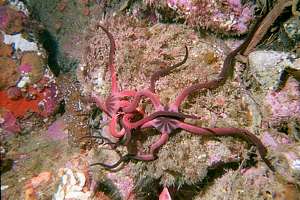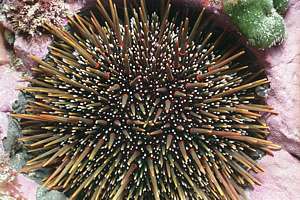 f036909: the green urchin (Evechinus chloroticus)
[kina] derives its name from its green test (shell) even though it may
look brown to red on the outside. It is a voracious grazer but on the rocky
shore it is usually found hiding under stones. The animals found here are
usually small and young, and move to the deep as they grow larger.
f036909: the green urchin (Evechinus chloroticus)
[kina] derives its name from its green test (shell) even though it may
look brown to red on the outside. It is a voracious grazer but on the rocky
shore it is usually found hiding under stones. The animals found here are
usually small and young, and move to the deep as they grow larger. |
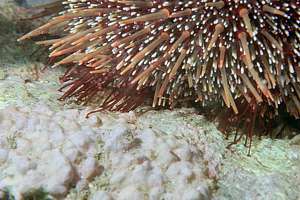 f019029: with its many tube feet, a sea urchin attaches firmly
to the rock. It has tubefeet between its spines too, and with these it
can catch seaweed that is floating by. Sea urchins are commonly seen holding
seaweed on their backs for later use, or stones, perhaps for protection
against wavewash and being sand-blasted.
f019029: with its many tube feet, a sea urchin attaches firmly
to the rock. It has tubefeet between its spines too, and with these it
can catch seaweed that is floating by. Sea urchins are commonly seen holding
seaweed on their backs for later use, or stones, perhaps for protection
against wavewash and being sand-blasted. |




